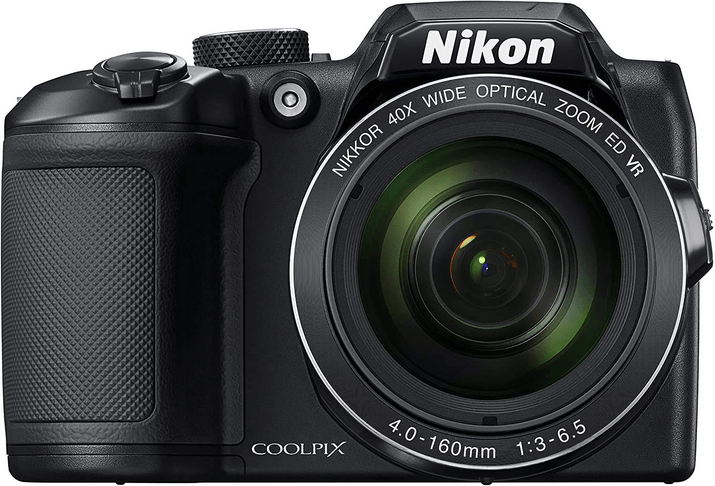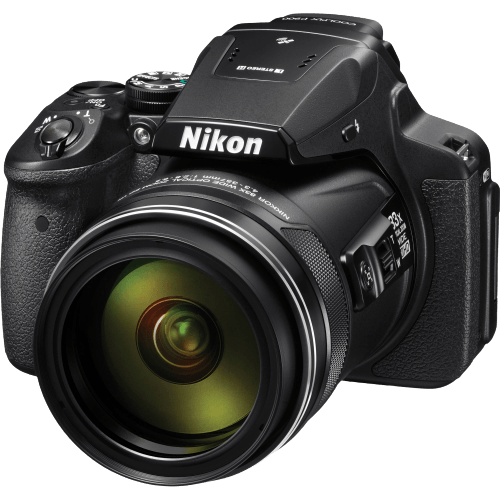Nikon Coolpix B500 vs Coolpix P900 Comparison
Nikon Coolpix B500

Nikon Coolpix P900

The Nikon Coolpix B500 takes the lead with a score of 53/100, while the Nikon Coolpix P900 trails behind at 48/100. Both cameras are of the bridge type, released in 2016 and 2015 respectively. They share similarities in their announcement dates and launch prices, with the B500 priced at $300 and the P900 at $599.
The B500’s advantages include its smaller size (114 x 78 x 95mm) and lighter weight (541g / 1.19lbs), making it more portable and user-friendly. Meanwhile, the P900’s larger size (140 x 103 x 137mm) and heavier weight (899g / 1.98lbs) may be more suitable for those who prefer a more substantial camera. Considering the specifications, the B500 is the winner for those seeking a more compact and affordable option, while the P900 caters to those who don’t mind a heftier camera.
Nikon Coolpix B500 vs Coolpix P900 Overview and Optics
Upon comparing the optics of the Nikon Coolpix B500 and the Nikon Coolpix P900, both cameras receive a score of 53/100, indicating no clear winner in this category. They share several common specifications, such as having 16 megapixels, a shooting speed of 7, a CMOS sensor type, a DXOMARK score of 72 for the sensor, a 1/2.3″ sensor size, no lens mount, image stabilization, and an aspect ratio of 4:3 for the B500 and 3:2 for the P900.
The Nikon Coolpix B500 has a fixed lens mount, which means that the lens cannot be changed. This could be advantageous for users who prefer a simpler, more straightforward camera without needing to invest in additional lenses. The 4:3 aspect ratio also provides a more square-like image, which some users may prefer for certain types of photography.
On the other hand, the Nikon Coolpix P900 is equipped with the Expeed C2 processor, which may provide faster processing times and better overall performance compared to the unspecified processor in the B500. The P900 also features a 3:2 aspect ratio, which offers a more rectangular image, often preferred for landscape and portrait photography.
While both cameras have their own unique advantages, the choice between the Nikon Coolpix B500 and the Nikon Coolpix P900 ultimately comes down to user preference and specific needs. Those who value simplicity and a more square-like aspect ratio may prefer the B500, while those who prioritize processing power and a more rectangular aspect ratio may opt for the P900. Despite the similarities in their optics scores, each camera offers distinct benefits to cater to the varying preferences of photographers.
Nikon Coolpix B500 vs Coolpix P900 Video Performance
The Nikon Coolpix B500 comes out ahead for video capabilities with a score of 70 out of 100, a nine-point advantage over the Nikon Coolpix P900’s score of 61. Both cameras share some common video specifications, including a max video resolution of Full HD (1920 x 1080), a max video frame rate of 60fps, and built-in time-lapse functionality.
The B500’s higher score reflects its superior performance in video recording. The camera’s Full HD video resolution ensures that users can capture sharp and clear footage, which is ideal for various purposes, from personal use to professional work. The 60fps frame rate allows for smooth motion in videos, and the time-lapse feature enables creative experimentation by capturing the passage of time in a compressed format.
Though the P900 has a lower score, it still has some strong video capabilities. Like the B500, it offers Full HD resolution, a 60fps frame rate, and time-lapse functionality. However, the P900’s overall video performance is not as strong as the B500, as indicated by its score.
Despite the lower score, the P900 can still be a suitable choice for users who are not heavily focused on video recording but still require decent video quality. However, for those who prioritize video performance, the B500 is the clear winner. Its higher score and better video capabilities make it a more suitable option for capturing high-quality videos and exploring creative possibilities through time-lapse photography.
Nikon Coolpix B500 vs Coolpix P900 Features and Benefits
The Nikon Coolpix B500 wins the feature comparison with a score of 54/100, while the Nikon Coolpix P900 scores 41/100. Both cameras share common specifications, such as a 3-inch screen size, 921,000-dot screen resolution, flip screen, and WiFi connectivity. However, the B500 outperforms the P900 in certain aspects, making it the winner in this comparison.
The Coolpix B500 has Bluetooth connectivity, which the P900 lacks. This feature allows for easy and seamless transfer of images between the camera and compatible devices, such as smartphones and tablets. This advantage makes the B500 more convenient for sharing photos and videos with friends and family or on social media platforms.
On the other hand, the Coolpix P900 has a GPS feature that the B500 does not have. This function enables the camera to record the exact location where a photo was taken, which can be useful for travel photography and documenting adventures. This feature may appeal to those who value geotagging their images for better organization and memory recall.
Despite these differences, both cameras offer excellent performance in their respective feature sets. The B500’s Bluetooth connectivity makes it a more user-friendly option for those who prioritize easy sharing of their captured moments. Meanwhile, the P900’s GPS functionality caters to photographers who require geotagging capabilities for their work or hobbies.
In the end, the choice between the Nikon Coolpix B500 and P900 depends on individual preferences and priorities. The B500 offers better connectivity features, while the P900 provides additional location-based capabilities.
Nikon Coolpix B500 vs Coolpix P900 Storage and Battery
The Nikon Coolpix B500 wins the storage and battery comparison with a score of 43/100, while the Nikon Coolpix P900 scores 21/100. Both cameras have one memory card slot and accept SD, SDHC, and SDXC memory cards. The B500 outperforms the P900 in battery life, providing 600 shots per charge, while the P900 offers 360 shots. The B500 uses 4 x AA batteries, and the P900 uses an EN-EL23 battery.
The B500’s advantage lies in its longer battery life and USB charging capability. These features make it more convenient for extended shooting sessions or travel. The P900, on the other hand, lacks USB charging, which can be a disadvantage for users who need to recharge on-the-go.
Despite the P900’s lower score in storage and battery, it may still appeal to some users due to its other features and specifications. However, for those prioritizing storage and battery performance, the Nikon Coolpix B500 proves to be the superior choice.
Nikon Coolpix B500 vs Coolpix P900 – Our Verdict
Are you still undecided about which camera is right for you? Have a look at these popular comparisons that feature the Nikon Coolpix B500 or the Nikon Coolpix P900:

